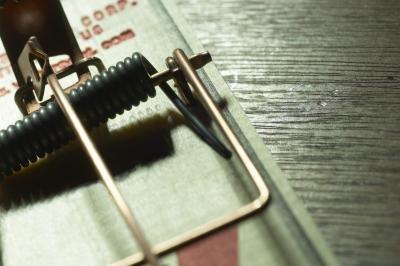In the ancient and medieval periods, catapults were used as siege weapons, capable of hurling projectiles such as boulders, flaming barrels of pitch or even beehives at enemy fortifications and cities. There were several types of catapult, some of which used counterweights and others that used torsion to store potential energy. Because the mechanical principles of the torsion catapult are simple, it's easy to make a small-scale replica that resembles the original and really works.
Instructions
1 Cut parts for your catapult out of wooden rod and sheet using a craft knife or saw. You will need two long sections to form the base of the catapult, a throwing arm and five short sections. You will also need two triangular supports cut from a flat wooden panel. The throwing arm should be five-sixths of the length of the base pieces. If your base pieces are a foot long, for example, the arm should be 10 inches. The short sections should be half the length of the arm, and the triangular supports should be slightly taller than one of the short sections.
2 Scrape the wooden sections with a wire brush to weather them. You may wish to stain them to give them a darker appearance.
3 Attach a short section to one of the base pieces at right angles. The upright should be a short distance from the forward edge of the base piece. Use wood glue to hold the upright in place. Repeat this process for both base sections.
4 Screw or nail a triangular support to both the upright and the base section, connecting them and adding extra rigidity. Again, do this for both base pieces.
5 Glue two short sections between the base pieces. They should be attached to the underside of the bases at the front and rear.
6 Insert the final short section as a crossbar by gluing it to the rear of both uprights at the top.
7 Drill a hole in the base sections. The hole should be as large as you can make it without damaging the base. Position the hole slightly to the rear of the uprights, and make sure the two holes are aligned.
8 Drill a hole in the end of the throwing arm. It can be smaller than the holes in the base piece.
9 Cut a length of string or twine. The exact length will vary depending on the thickness of the string and the size of the catapult. A foot-long catapult can need up to 30 feet of string. Tie a length of heavy wire, like coat hanger wire, to the end of the string.
10 Tie the opposite end of the string to a length of dowel. Using the wire like a needle, thread the string first through the hole in one base piece, then through the hole in the arm, then out of the hole in the opposite base piece. Wrap the string around another length of dowel and thread it back through the hole, repeating the process in reverse.
11 Repeat this process until the string is used up or can no longer fit through the holes. After the first three or four passes, you no longer need to thread the string through the hole in the arm. Instead, pass it behind the base of the arm on the first pass, then in front of it on the return until the arm is wrapped tightly between two layers of string.
12 Build a basket to hold your projectile, using scrap wood or cardboard. You can glue or pin this to the upper surface of the head end of the throwing arm.
13 Insert a screw hook into the head end of the throwing arm. Insert hooks into the base pieces so that they line up, then depress the throwing arm and run a length of wire through all three hooks. To launch the catapult, load the projectile into the basket and pull the wire out.























